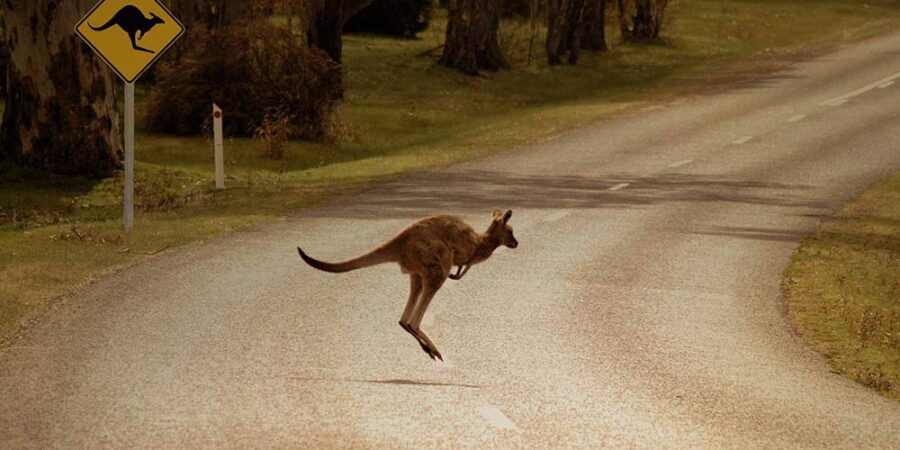What should I do if I hit an animal, or spot animals on the side of the road?
1. Stop: If it is safe to do so, pull over and check to see if the animal is still alive. Please note that if you spot a clearly visible paint mark or cross on the animal this means they have already been checked by a wildlife carer and there is no need for you to stop.
2. Call for help: If the animal has survived, ensure you have the contact number of a couple of wildlife rescue groups in your area handy so that you can phone them for assistance.
3. Check the pouch: If the animal has sadly not survived, please note that marsupial joeys can live for days in a mother’s pouch after she has died. You just might find that you’re able to save her joey. Download this brochure from Fourth Crossing Wildlife for instructions on how to safely remove a joey from the pouch.
4. Move the animal away from the road: Dead animals can attract scavenger animals towards the road to feed, and increase the chances of more collisions. You can reduce
this risk by moving the dead animal even a few metres away from the road.












